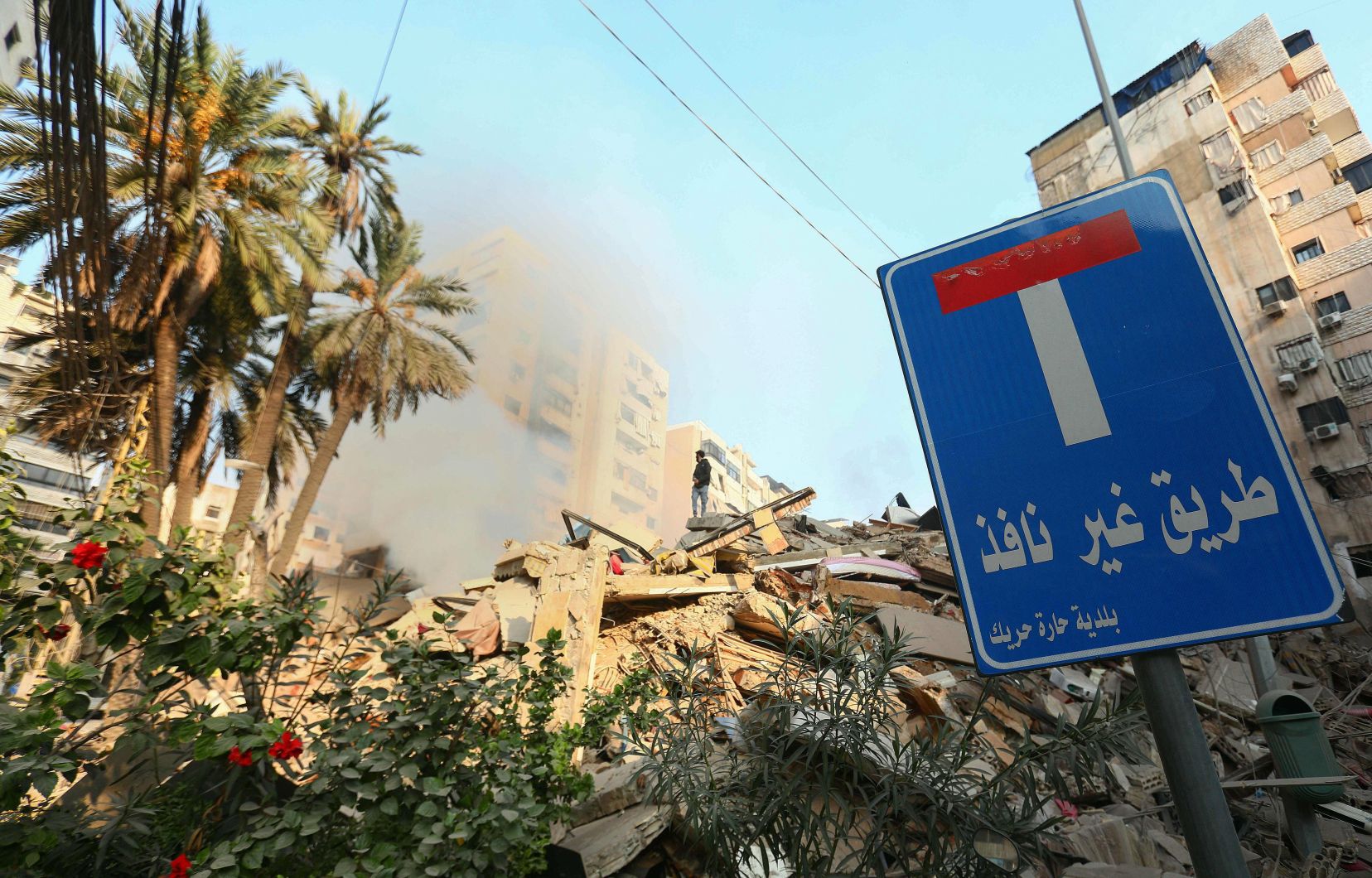The Israeli army carried out two deadly air raids on Thursday evening on the Lebanese capital, rarely hit since the start of its open war against Hezbollah, after shots targeting, according to the UN, the headquarters of the Blue Helmets in Lebanon, which caused a diplomatic outcry.
According to a new report from the Ministry of Health, 22 people were killed, and 117 injured, in these strikes, which targeted, according to the official news agency ANI, the densely populated residential district of Ras al-Nabeh and the adjacent one. by Noueiri. AFPTV showed two columns of smoke rising above the capital.
One of these strikes targeted a Hezbollah official, a Lebanese security source told AFP.
This is the third time that the Israeli air force, which concentrates its raids on the southern suburbs of Beirut, a Hezbollah stronghold, has directly targeted the capital since the launch of its massive strikes against the Lebanese pro-Iranian movement on September 23.
On the Gaza Strip front, where Israel is once again intensifying its bombings and ground operations, the Palestinian Red Crescent announced Thursday the death of 28 people in a strike on the Rafidah school in Deir el-Balah (center) sheltering displaced families, which also left 54 injured.
The Israeli army spoke of a “precise” air strike on “terrorists” operating “in buildings previously used” as schools.
In Lebanon, the UN force (UNIFIL) deployed between the two countries denounced “repeated” shooting by Israeli troops on its positions, one of which injured two peacekeepers on Thursday, triggering protests from countries contributing to this force, Italy, France, Spain and Ireland.
At the request of France, a meeting of the UN Security Council is scheduled for Thursday at 7 p.m. GMT, devoted to Lebanon.
Italy, which deploys the largest number of troops, 900 soldiers, within UNIFIL, has notably mentioned possible “war crimes”. The United States said it was “very concerned” by the reports.
The Israeli army claimed to have fired “near” the UNIFIL headquarters, specifying that it had asked UN soldiers to remain “in protected spaces”.
“Shooting at everything that moves”
Israel has concentrated its forces on the Lebanese front, taking advantage of the weakening of Hamas after a year of war in Gaza.
But citing an attempt by the Palestinian Islamist movement to reconstitute its capacities in the north of Gaza, it has surrounded Jabalia there since Sunday, shelling the sector, which civilians are fleeing in panic, amid the rubble.
“It doesn’t stop: every minute, there are shells, rockets and shooting at buildings and everything that moves,” describes Areej Nasr, a thirty-year-old, who fled Jabalia for the town of Gaza.
According to Gaza Civil Defense spokesperson Mahmoud Bassal, at least 140 people have died in Jabalia since the start of the operation, and “a large number” of civilians remain trapped under the rubble, with rescuers unable to intervene. in view of the security conditions.
The Israeli army announced that three of its soldiers had been killed in the north of the Gaza Strip, bringing its losses there to 353 soldiers over the past year.
At least 400,000 people are trapped in the area, according to the UN.
The United Nations International Independent Commission of Inquiry, citing “crimes against humanity”, accused Israel on Thursday of deliberately targeting health facilities in Gaza.
The war in Gaza was triggered on October 7, 2023 by the Hamas attack against Israel which resulted in the deaths of 1,206 people, mostly civilians, according to an AFP count based on official Israeli figures and including hostages dead or killed in captivity in Gaza.
The war in Gaza has devastated entire sectors of the small, besieged territory and displaced almost all of its 2.4 million inhabitants.
At least 42,065 Palestinians have been killed, the majority civilians, in the Israeli offensive in Gaza, according to data from the Hamas government’s Health Ministry, deemed reliable by the UN.
On Tuesday, Israeli Prime Minister Benjamin Netanyahu warned that Lebanon could suffer the same fate as Gaza.
Israel’s objective is to distance Hezbollah from the border areas and stop its rocket attacks, which have been daily for a year, to allow the return of some 60,000 displaced residents to northern Israel.
Despite the death of several of its leaders, including its number one Hassan Nasrallah, in Israeli strikes, Hezbollah claims to resist Israeli troops.
On Thursday, he announced that he had “destroyed an Israeli tank” in the border area, and claimed intense rocket fire in northern Israel.
“Besieged”
Israel also carried out new strikes on Thursday evening on the south and east of Lebanon, other Hezbollah strongholds, according to ANI.
The army, which launched land operations on September 30 against Hezbollah in the south of the country, said it had targeted “more than 110 targets” of the movement since the day before.
“We don’t want to be part of the conflict” but “we find ourselves under siege,” says Joseph Jarjour, 68, in the Christian village of Rmeich, very close to the border.
Since October 2023, more than 2,000 people have been killed in Lebanon, including nearly 1,200 since September 23, according to an AFP count based on official figures.
According to the coordinator of the UN humanitarian branch, assigned to Lebanon, Imran Riza, the country is facing “one of the deadliest periods” in its history. He estimated the number of people displaced within Lebanon at 600,000. .
In a telephone interview on Wednesday, US President Joe Biden asked Benjamin Netanyahu to “minimize the impact” on civilians, particularly in Beirut, while “affirming Israel’s right to protect its citizens from Hezbollah.”
The two leaders also discussed Israel’s plan to strike Iran, in response to the missile attack launched by Tehran against Israeli territory on October 1. Israeli Defense Minister Yoav Gallant promised a “deadly, precise and surprising” response.
